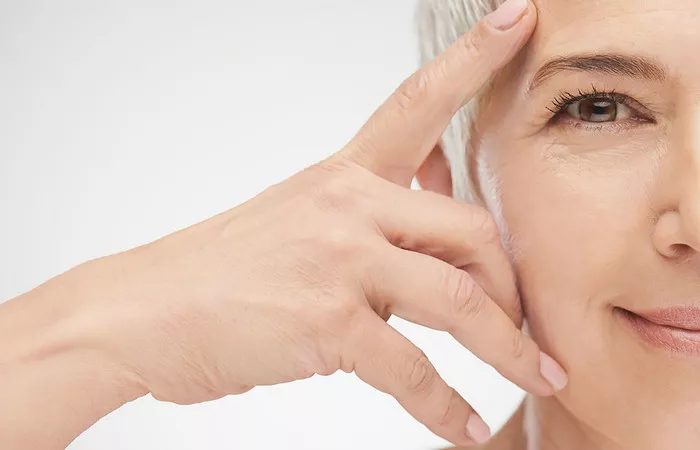Blepharoplasty, commonly known as eyelid surgery, is a popular cosmetic procedure that aims to enhance the appearance of the eyes by addressing issues such as droopy eyelids, excess skin, and puffy bags. Like any surgical procedure, blepharoplasty entails a recovery period during which patients may experience swelling, bruising, and discomfort. Swelling, in particular, is a common concern for individuals considering or undergoing blepharoplasty. In this article, we will explore the topic of post-operative swelling and provide insights into how long it typically lasts after blepharoplasty.
Understanding Swelling After Blepharoplasty
Swelling is a natural response of the body to surgery. During the blepharoplasty procedure, incisions are made on the eyelids to remove excess skin, fat, or muscle. These incisions can disrupt the lymphatic system, causing fluid buildup and resulting in swelling. Swelling typically occurs around the eyes and may extend to the surrounding areas.
The severity of swelling after blepharoplasty can vary from person to person. It is influenced by several factors, including the individual’s overall health, the extent of the surgery, the surgeon’s technique, and the patient’s adherence to post-operative care instructions. While swelling is an expected part of the healing process, it is important to note that it tends to subside gradually over time.
Immediate Post-Operative Swelling
Immediately after blepharoplasty, patients can expect a significant amount of swelling. The eyelids may appear puffy, and the surrounding tissues may feel tight and tender. This initial swelling is usually at its peak during the first 48 to 72 hours following the surgery. Patients are advised to rest, keep their head elevated, and apply cold compresses to help reduce swelling during this period.
Subacute Swelling: Days 3 to 7
During the subacute phase of recovery, which typically lasts from day 3 to day 7 after surgery, the swelling gradually begins to decrease. While patients may still experience some puffiness and mild discomfort, the overall swelling should be noticeably reduced compared to the immediate post-operative period. It is important to continue following post-operative care instructions during this phase, including gentle cleansing of the eyelids and avoiding activities that may strain or stress the eyes.
Residual Swelling: Weeks 2 to 4
In the weeks following blepharoplasty, most patients will experience residual swelling. This swelling is often minimal and may not be noticeable to others, but the patient may still be able to feel it. During this phase, the majority of bruising and discoloration should have faded, and the eyelids should continue to improve in appearance. It is common for patients to return to their regular daily activities and wear makeup at this stage, as long as their surgeon approves.
Complete Resolution: Months 1 to 3
It is important to have realistic expectations when it comes to the timeline for swelling resolution after blepharoplasty. While the majority of swelling subsides within the first few weeks, it can take several months for the final results to become apparent. By months 1 to 3 post-surgery, the swelling should have resolved completely, and the eyelids should have settled into their new shape. It is crucial to maintain patience and continue following any post-operative instructions provided by the surgeon during this time.
Factors Affecting Swelling
While the general timeline for swelling after blepharoplasty has been outlined above, it is essential to note that individual experiences may vary. Several factors can influence the duration and severity of swelling:
- Surgical Technique: The specific surgical technique used by the surgeon can impact the extent of swelling. Less invasive techniques, such as transconjunctival blepharoplasty, may result in reduced swelling compared to more traditional methods.
- Individual Healing: Each person’s body heals at its own pace. Factors such as age, overall health, and genetic predisposition can influence how quickly swelling subsides.
- Post-Operative Care: Strict adherence to post-operative care instructions provided by the surgeon is crucial in minimizing swelling and promoting optimal healing. This includes taking prescribed medications, avoiding strenuous activities, and keeping the surgical area clean.
- Patient Compliance: Following a healthy lifestyle, including proper nutrition and hydration, can positively impact the healing process and help reduce swelling.
Consulting with the Surgeon
It is important to remember that every patient’s experience with swelling after blepharoplasty is unique. The best way to obtain personalized information regarding swelling and recovery is to consult with a board-certified plastic surgeon who specializes in eyelid surgery. They will be able to evaluate the individual’s condition, provide detailed pre- and post-operative instructions, and address any concerns or questions.
In conclusion, swelling is a normal part of the healing process after blepharoplasty. While the exact duration of swelling can vary from person to person, it generally follows a pattern of gradual improvement over the course of several weeks to months. Understanding the timeline and factors influencing swelling can help patients set realistic expectations and facilitate a smoother recovery. By consulting with a qualified surgeon and adhering to their guidance, individuals can navigate the healing process with confidence and achieve the desired aesthetic outcomes from blepharoplasty.

